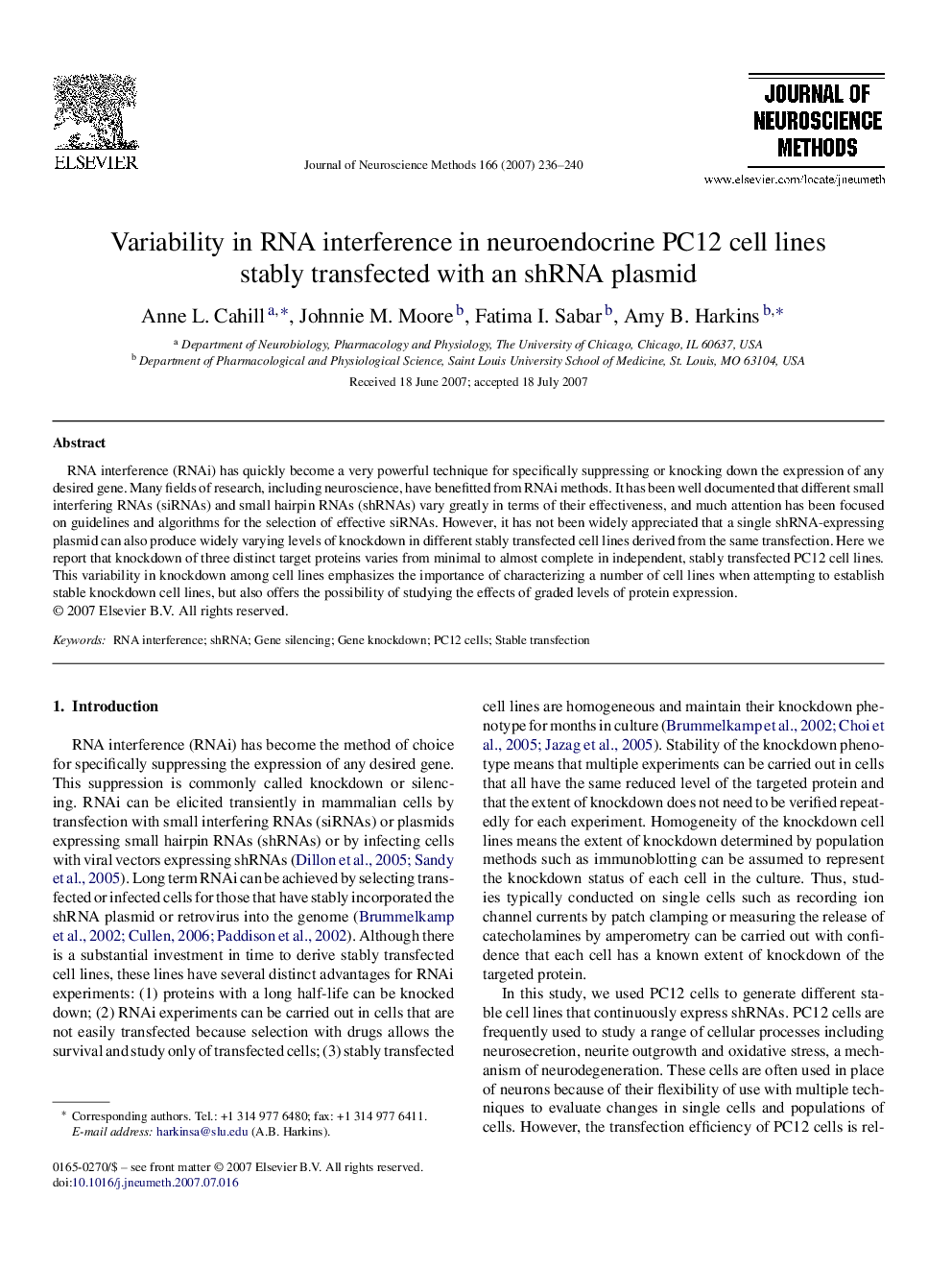| Article ID | Journal | Published Year | Pages | File Type |
|---|---|---|---|---|
| 4336534 | Journal of Neuroscience Methods | 2007 | 5 Pages |
RNA interference (RNAi) has quickly become a very powerful technique for specifically suppressing or knocking down the expression of any desired gene. Many fields of research, including neuroscience, have benefitted from RNAi methods. It has been well documented that different small interfering RNAs (siRNAs) and small hairpin RNAs (shRNAs) vary greatly in terms of their effectiveness, and much attention has been focused on guidelines and algorithms for the selection of effective siRNAs. However, it has not been widely appreciated that a single shRNA-expressing plasmid can also produce widely varying levels of knockdown in different stably transfected cell lines derived from the same transfection. Here we report that knockdown of three distinct target proteins varies from minimal to almost complete in independent, stably transfected PC12 cell lines. This variability in knockdown among cell lines emphasizes the importance of characterizing a number of cell lines when attempting to establish stable knockdown cell lines, but also offers the possibility of studying the effects of graded levels of protein expression.
